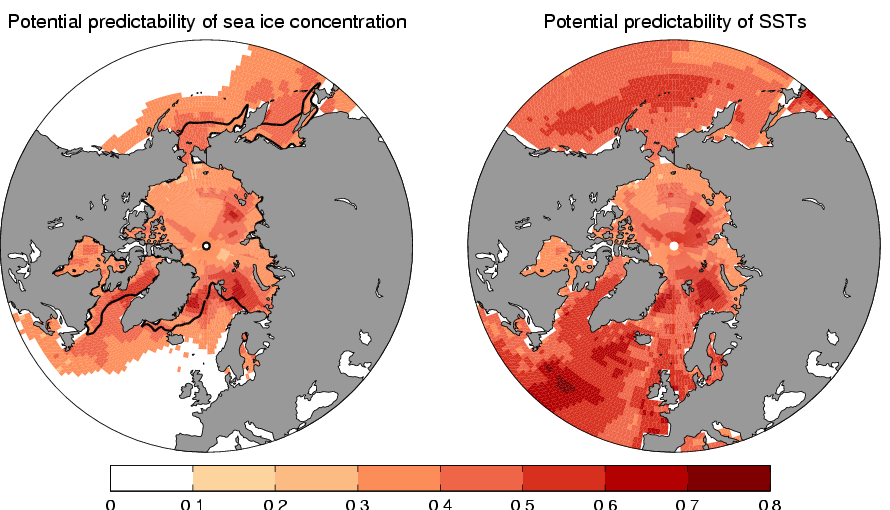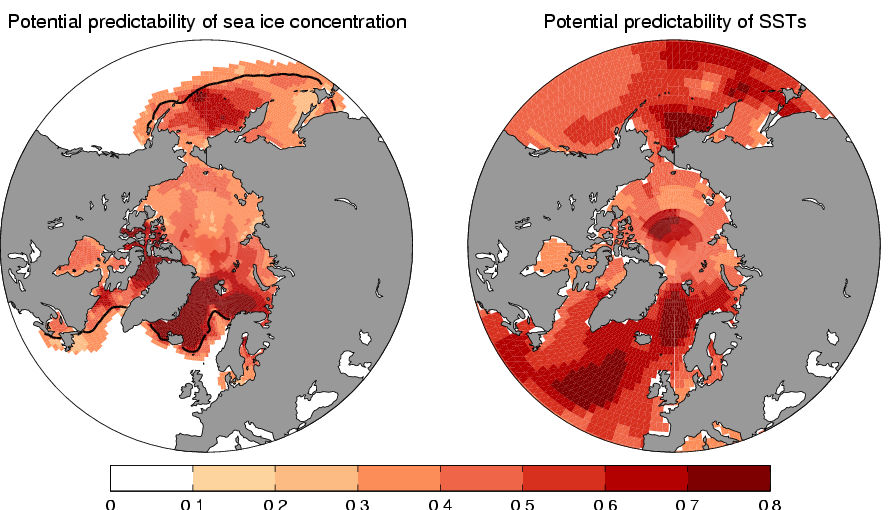After attending a recent workshop on Arctic predictability, I thought a brief discussion on sea-ice variability and potential predictability might be of interest.
The simplest measure of predictability on multi-annual timescales is “potential predictability” (PP), which is the ratio of the standard deviation in decadal means to the standard deviation of annual means. This is essentially a crude measure of the fraction of the variability which has a decadal timescale and is therefore potentially predictable.
Below is the PP for Arctic sea-ice and SSTs (below the ice) in two different GCMs (HadCM3 and Bergen CM) and shows that there is considerable decadal variability in sea-ice extent in both models. Interestingly, often this variability is found co-incident with decadal variability in SSTs under the sea-ice, suggesting that the underlying SSTs are responsible. This provides some evidence that decadal variability in sea-ice might be predictable.

